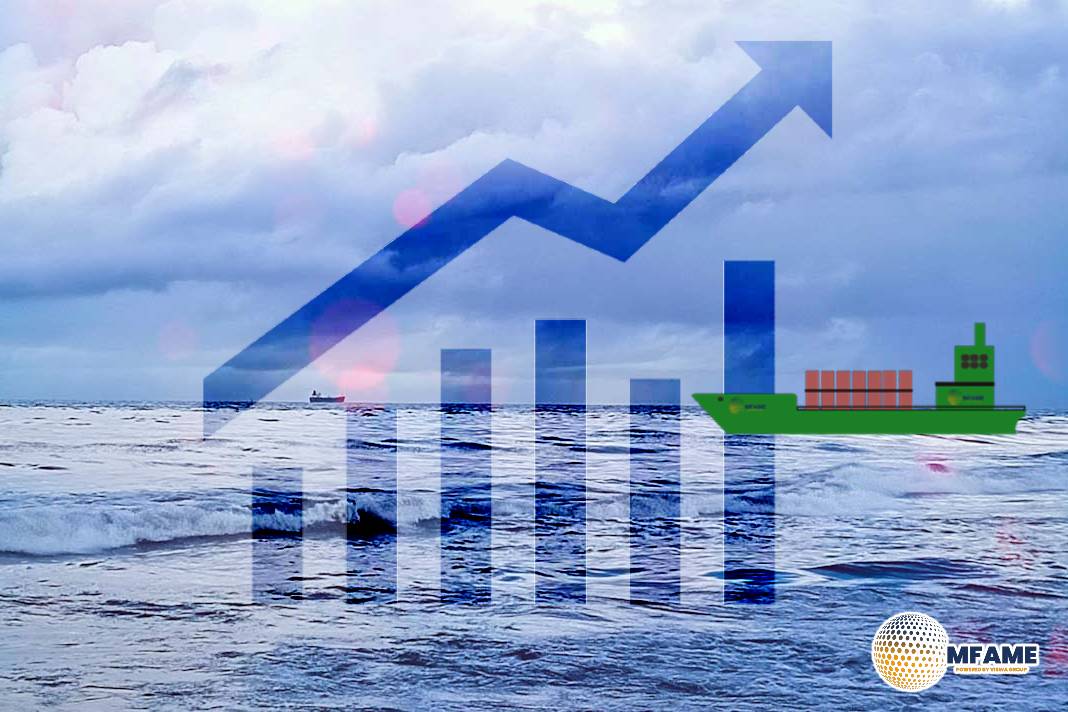Consumers around the world will pay the price for the unfolding crisis in the Red Sea after missile attacks on merchant ships plunged supply chains into chaos, reports Xeneta.
Markets spike
Latest data from leading industry analysts Xeneta shows spot rates in the ocean freight shipping market spiked by 20% since Friday after major shipping liner companies announced they are avoiding the Red Sea amid the attacks by Houthi militia.
Peter Sand, Xeneta Chief Analyst, said: “The region is essentially in a war situation because it is too dangerous for many vessels to sail through the Red Sea and the Suez Canal, which is the major artery for world trade.
“Ships are now being re-routed via the Cape of Good Hope, but not only will this add up to 10 days sailing time, it will cost up to USD 1 million extra in fuel for every round trip between the Far East and North Europe.
“If we look at container shipping alone, Xeneta estimates the diversion via Africa will also require additional shipping capacity in the region of one million TEU (20ft equivalent shipping containers).
“There is capacity in the market, but it will come at a cost, and we could see ocean freight shipping rates increase by 100%. This is a cost that will ultimately be passed on to consumers who are buying the goods.”
On Monday, the US Secretary of Defense Lloyd Austin announced ‘Operation Prosperity Guardian’, a coalition task force to combat the Houthi attacks and protect merchant ships sailing through the Red Sea and the Gulf of Aden. This builds upon the existing Task Force 153 in the region to tackle piracy.
Sand added: “We are now seeing action from politicians, but we do not know how or when this coalition will be successful in opening safe passage for vessels through the Red Sea and Gulf of Aden.
“Everything is at stake here because free-flowing global trade affects almost every single human being on earth. The Suez Canal is critical, with billions of dollars in goods passing through daily from the Far East towards North Europe, the Mediterranean, and the US East Coast.
“Ocean liner companies are taking decisive action in re-routing via the Cape of Good Hope but there are still many unknowns and the longer this disruption lasts the more expensive and painful it will be.
“Supply chains have still not fully recovered from the pandemic, with schedule reliability between the Far East and North Europe standing at just 64%. This latest crisis could set that recovery back even further.
“For example, Maersk has stated it does not know when it will be safe to sail through the Bab-el-Mandeb Strait and CMA CGM Group has issued a notice of Force Majeure, which perhaps suggests they do not believe this situation will be resolved in the immediate future.
“We may also see this impact current negotiations between shippers and ocean freight carriers for long-term contracts lasting 2024. Shippers may feel a level of concern that long-term rates could follow the spot market and increase dramatically as a result of this crisis.
“The industry will look at the Xeneta XSI® closely during 2024.”
Did you subscribe to our daily Newsletter?
It’s Free! Click here to Subscribe
Source: Xeneta






















